| The Two-Part
Conductus: Morphology, Dating and Authorship9 |
| 音楽エッセイのページへ戻る | 初期多声音楽 | St.マーシャル楽派へ |
| Leoninのページへ | ノートルダム楽派(conductus)のページへ |
ペロタン(Viderunt Omnes) |
| ペロタン(Alleluja Nativitas) | ペロタン Clausulaのページ | まうかめ堂さんのページへ |
| substitute clausulaのページへ | 中世音楽のページへ | その10へ進む |
| その8へ戻る |
| The Two-Part Conductus: Morphology, Dating and Authorship9 by Jacopo Mazzeo その9(p176〜190) 3.3. Celebrative Conducti <Novus miles sequitur> Further celebrative conducti were composed to mourn or commemorate the memory of eminent personalities of the time, such as Philip Augustus, or Richard I Lionheart. Among them, of great interest to this study is Novus miles sequitur, the earliest datable polyphonic conductus. The song’s text concerns in this case the figure of Thomas of Canterbury, as the words novus miles sequitur viam novi regis…Thomas (A new soldier follows the path of a new King…Thomas) would suggest. It was either composed to mourn his death in 1170, or to celebrate his canonisation three years later. Philip Augustus,やリチャード獅子心王など、有名な人物の記憶を悼んで記念するために、さらに祝祭的なconductiが作曲された。その中でも、この研究が大きな関心を持っているのは、もっとも初期のdatableな多声conductusであるNovus miles sequiturである。歌のテキストは、この場合Thomas of Canterburyの姿であり、novus miles sequitur viam novi regis ... Thomas(新しい兵士は新しい王の道を歩いている... Thomas)という歌詞が提案される。それは1170年の彼の死を悼むため、あるいはその3年後の彼の叙任式を祝うために作られたものである。 It survives in two- and three-voice versions: the former in Ma (139r-139v) and E-BUlh 9 (101v) . both of which record the first stanza only . and the latter in F (230r-230v) . where all three stanzas of the text are preserved. It is musically strophic, and each stanza follows the scheme: 7pp-6p-7pp-6p-7pp-7pp-6p-7pp-7pp-6p. There are no melismas in any of these three separate copies, but there is evidence to suggest that a terminal cauda might have been extant at some point in the two-part version. In E-BUlh 9 the scribe clearly left room for a final cauda on the syllable “en” (of “orientem”, the last word of the first stanza). それは2声と3声の版で残っている:前者はMa写本(139r-139v)とE-BUlh 9しゃほん(101v)である。どちらも最初のスタンザのみが記録されている。後者はF(230r-230v)である。テキストの3つのすべてのスタンザが保存されている。それは音楽的に有節であり、それぞれのスタンザは、7pp-6p-7pp-6p-7pp-7pp-6p-7pp-7pp-6pというスキームに従う。これらの3つの分離された写譜にはメリスマはないが、2声部版では、terminal caudaがいくつかの点で存在していたことを示唆する証拠がある。E-BUlh9では、書記は、シラブル "en"(“orientem”からの最初のスタンザの最後の言葉)上のfinal caudaに明確な余地を残していた。 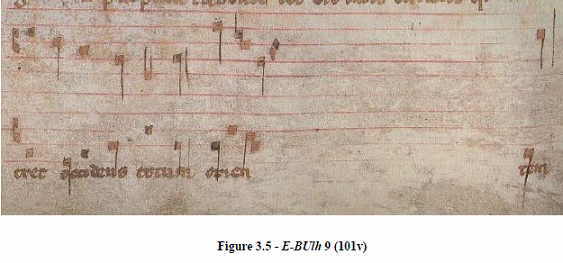 The final note may have been written earlier to mark the end of the piece on the page, but no other pieces in this manuscript show such a practice, and so, this is unlikely. Neither is there evidence of any practice of scribal omission of some caudae for aesthetic purposes. The possibility that the copyist was making use of a source, to some degree incomplete, is a more credible theory. 最後の音符は、ページ上の作品の終わりを示すために少し前に書かれているようにも思えるが、この写本の他のどの作品もそのような状況ではないので、やはりそうではない。 審美的な目的のためにいくつかのcaudaeの省略をしたという証拠も存在しない。 写譜者がある程度資料を使用している可能性は、かなり不完全ではあるが、より信頼できる理論である。 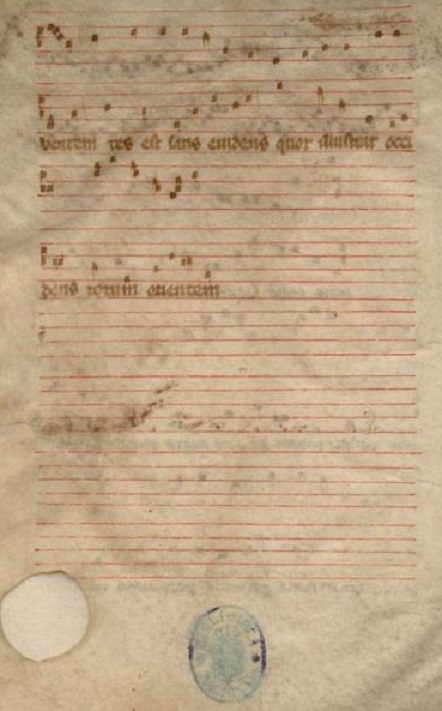 Figure 3.6 - Ma (139v) As far the version in Ma is concerned, the end of the song coincides with the end of the written content of the manuscript. Consequently, it is not possible to tell whether the blank space was meant to be filled with a melisma, further stanzas, or even further songs. Ma写本の版までは、曲の終わりは写本の内容の終わりと一致している。その結果、空白スペースがメリスマや、さらなるスタンザ、またはさらなる歌で満たされることを意味しているかどうかを判断することができない。 <Nulli beneficium> From the same period would come another conductus, Nulli beneficium, whose dating was first proposed by Handschin in 1932. This dating was however later rejected by both Sanders and Payne as his suggestion was not supported by strong evidence.58 For the sake of thouroughness I will report the Handschin’s relevant passage below: 同じ期間では、1932年にHandschinによって最初にdatingが提案された別のconductus、Nulli beneficiumが来るだろう。しかし、このdatingは、のちにSandersとPayneの両方によって、きちんとした証明がないことにより、拒絶された。ここでHandschinの該当部分を見てみよう。 I was struck by a great stylistic likeness between ‘Redit aetas aurea’ and ‘Nulli beneficium,’ […]. The latter text contains an earnest admonition, and even a severe censure, against a young dignitary of the Church, whose past was not exactly ecclesiastical. I asked a connoisseur of English civilisation (Prof. Bernhard Fehr, of Zurich) whether he could give me names for the thing. […] Among the names quoted by Prof. Fehr there was one which fitted exactly, that of Geoffrey, the natural son of Henry II., who, having been nominated as Bishop of Lincoln in 1173, entered on his See in 1175 and left this post in 1182. The passage ‘Virtute, non sanguine decet niti’ occurs in this text (‘upon virtue, not upon blood thou must rely’)-it suits the son of a king exactly.59 私は、「Redit aetas aurea」と「Nulli beneficium」の間の「偉大な文体的な類似性」に打たれた[...]。後者のテキストは、過去にまさに教会的ではなかった教会の若い聖職者に対して、本格的な勧告、ひどい批判さえ含んでいる。私は英語文明の愛好家(チューリッヒのBernhard Fehr教授)に、私にあるものの名前を教えてもらえるかどうかを尋ねた。 [...] Fehr教授が引用した名前の中には、1173年にリンカーン司教として指名され、1175年に彼の主教座に入り、1182年にそのポストを辞したヘンリー2世の息子、Geoffreyがいた。「Virtute、non sanguine decet niti」というパッセージは、その王の息子にこそまさにふさわしい。 Sanders’ arguments for rejection are indeed understandable; neither the “great stylistic likeness”, nor the main argument explained in the passage above constitute solid bases for dating. Also, its musical design would not fit with the general characteristics of the early conductus outlined previously. In fact, according to the suggestions made in the first pages of this chapter, we would expect a perfect correspondence of terminal caudae per stanzas from such an early piece. On the contrary here a terminal cauda is only set to one of the three stanzas. I agree with Sanders and Payne’s rejection of this dating; since the text does not offer additional clues to propose a valid alternative theory, I do not include this song in my list of datable conducti. サンダーズの拒絶理由は確かに理解できる。上記の文章で説明されている「偉大な文体的な類似性」も主たる議論も、datingのための強固な基盤とはならない。また、その音楽的なデザインは、以前に概説した初期のconductusの一般的な特徴には適合しないだろう。実際、この章の最初のページで提案された提案によれば、我々は、そうした初期の作品から、スタンザごとのterminal caudaの完全な対応を期待したことだろう。これに対してこちらでは、terminal caudaは、3つのスタンザのうちの1つに設定されている。私はSandersとPayneがこの日付を拒否したことに同意する。テキストは有効な代替理論を提案するための追加的手掛かりを提供しないので、この曲は私のdatable conductiのリストには載せていない。 <Ex oliva Remensium> The attempt to date Ex oliva Remensium is considerably less questionable than the previous case. This polyphonic and melismatic song is the first of a little group of conducti that concern the figure of Philip Augustus (1165-1223).60 Ex oliva Remensium refers specifically to the coronation of the French king in 1179.61 It survives in three codices: F (338v-339v), W1 (114r(105r)-114v(105v)), and Ma (85v-87r), each one transmitting all three stanzas of the poem. Through-composed and highly melismatic, it represents a unique contribution to the music of its time. No other datable conductus composed before the end of the twelfth century offers such a high concentration of melismatic music. The exceptionally regular placement of its caudae makes this song a remarkable early example of this repertoire, and complicates the study of its chronology considerably. Ex oliva Remensiumの日付確定の試みは、前の場合ほど疑わしいものではない。このポリフォニックでメリスマ的な歌はPhilip Augustus(1165-1223)の姿に関係するconductiのグループの最初のものである。 Ex oliva Remensiumは、1179年のフランス王の戴冠式を具体的に指している。それは、以下の3つの写本に現存している。F写本 338v-339v)、W1写本(114r(105r)-114v(105v))、およびMa写本(85v-87r)であり、それぞれが詩の3つのすべてのスタンザを伝えている。通作的、そして非常にメリスマ的でありそれはその時代の音楽へのユニークな貢献を表している。 12世紀の終わりまでに作曲された他のdatable conductusは、そのような高密度のメリスマを伴う音楽を提供していない。例外的に定期的にそのcaudaeを配置することで、この曲はこのレパートリーの早い初期例となり、その年代学の研究はかなり複雑になる。
Each stanza opens and ends with extended framing caudae. The two rather elaborate and unusually lengthy micro-caudae on quod and fons found in the first stanza are the most exceptional musical feature of the song. These two micro-caudae (Music Example 3.2), present a sort of voice exchange, a dialogue between upper voice and tenor. Such a design is also visible in the longer internal caudae that regularly introduce the last line of each stanza, on reddit, de, and et. それぞれのスタンザが、冒頭と終止に、拡大したframing caudaeを伴っている。第1スタンザの、quod とfons上の2つのより丹精な、異常に長いmicro-caudaeは、この歌のもっとも例外的な音楽的特徴である。これらの2つのmicro-caudae(Music Example 3.2)は、一種の声部交換を示し、上声部とテノールの間の対話となっている。 このようなデザインは、reddit、de、etなどのような、各スタンザの最後の行を規則的に導く、より長いinternal caudaeでも見られる。 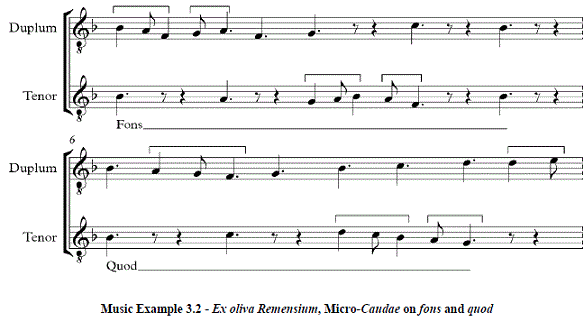 <Ver pacis aperit> Ver pacis aperit is the earliest two-part syllabic datable conductus, and it is also dedicated to Philip Augustus, written in 1179 for his coronation.62 All its sources transmit the whole poem (GB-Ob Add. A.44, f. 64r and F-SOM 351, ff. 19v-20r), which comprises of five stanzas of eight proparoxytonic six-syllable lines each. A further textonly source provides stanzas 1, 3 and 4 (I-Rvat Vat. Lat. 3324). Among the musical sources, F transmits the first two stanzas (355r), while CH-SGs 383 (173) the first three. Although syllabic, Ver pacis aperit features eight proportional musical phrases marked by Silbenstriche (Figure 3.7). In the tenor, two phrases are alternated in the form ABAB, and then new material (CDEF), closes the stanza with no repetition, bringing the music towards the final cadence on the fifth g-D. Ver pacis aperitは、最も初期の2声のdatable conductusであり、1179年のPhilip Augustusの戴冠式のために書かれた。すべての資料(GB-Ob Add. A.44, f. 64r そして F-SOM 351, ff. 19v-20r)は、詩全体を伝えているが、それぞれ8つのproparoxytonicな6行で5つのスタンザから構成されている。さらに、テキストだけの資料(I-Rvat Vat. Lat. 3324).が、第1,3,4スタンザを伴っている。音楽資料の中で、F写本(355r)は最初の2つのスタンザを持ち、CH-SGs写本383(173)は最初の3つのスタンザを持つ。シラビックであるにもかかわらず、Ver pacis aperitには、Silbenstricheによって区切られた8つの音楽フレーズがある(Figure 3.7).。テノールは2つのフレーズがABAB形式で交互に代わる。次に新しい素材(CDEF)が、繰り返しなしで最後のカデンツに向かって、五度g-Dにてスタンザを閉じる。 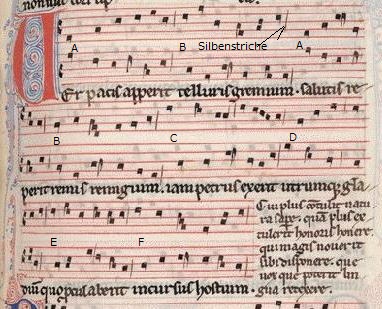 Figure 3.7 - F (355r), Ver pacis aperit. <Nemo sane spreverit> The debate around the dating of the three-voice conductus Nemo sane spreverit (Table 3.11) might offer useful methodological insights for later discussions.63 To date this piece scholars relied on the popular contemporary anecdote, which claimed that the French King Philip Augustus was blind in one eye.64 The second line of the poem reads indeed me monolocum (me one-eyed), and the anecdote is stressed again in the third stanza with the words me cecorum faciet regem regio (the region will make me King of the blind). Here, the song is clearly playing with the medieval proverb “inter caecos unoculus rex est” (among the blind, the one-eyed man is king).65 The song conveys an optimistic feeling; Polyphemus was indeed the most renowned among the giants (second stanza). 3声のconductusNemo sane spreveritのdatingに関する論争は、後の討論に対して、有用な方法論的洞察を提供している。この作品の日付を決めるために、学者たちは人気のあった当時の逸話(フランス王Philip Augustusが隻眼で盲目であったという)に頼っていた。詩の第2行は確かに、me monolocum (me one-eyed)と読み込んでいる。そして逸話は再度、第3スタンザにおいて、me cecorum faciet regem regio (the region will make me King of the blind)という言葉を発している。 ここでは中世の諺「inter caecos unoculus rex est」(盲目で片目の人が王)とともに、歌が歌われている。.65この曲は楽観的な感情を伝える。 Polyphemusは実際に巨人の中で最も有名だった(第2スタンザ)。
Delisle suggests the date of Philip’s death, 1223, as a plausible year for this composition, on the contrary Anderson suggests that the song was written during the time between the Battle of Buvines (1214) and the death of the King itself.66 There is no historical evidence to suggest when, or even if, the French king actually lost the sight of one eye.67 As a consequence, since Sanders’ work on datable conducti, both these hypotheses have been rejected.68 Despite all this, whether the claim of Philip’s blindness is historically correct or not is of no interest to our purpose. In fact, this myth might have been already circulating as early as at the time of the composition of this conductus. We know for sure that it was taken for granted in the fourteenth century, when Giovanni Boccaccio, writing his Decameron, refers to Philip as “re Filippo il Bornio” (in Italian, “bornio” means “cross-eyed”).69 Delisleは、Philipの死の年(1223年)を、もっともらしいこの歌の作曲年であると示唆しているが、逆にAndersonは、この曲は、Buvinesの戦い(1214)と王自身の死の間に書かれたと示唆する。フランスの王が実際に一方の視力を失った時を示唆する歴史的証拠はない。結果として、Sandersによるdatable conductiに関する研究以来、これらの仮説は両方とも拒否されている。フィリップの失明が歴史的に正しいかどうかは私たちには何ら関心がない。実際、この神話は、このconductusが作曲された当時にはすでに、流行していたかもしれない。Giovanni Boccaccioが、デカメロンを書いて、Philipを「“re Filippo il Bornio”」(イタリア語で“bornio”「生まれながら」は「cross-eyed」)と呼んでいるのは、14世紀には当然のことであった。 <Redit etas aurea> Moving on to Philip’s contemporary English King Richard I Lionheart, we find the conductus Redit etas aurea.70 The style of its first pair of stanzas reflects that of the early stage of the genre, with a final cauda at the end of each; quite syllabic music characterise the cum littera section. However, the semi-melismatic style of the music for stanzas 3 and 4, and the cadences on fifths, octaves and especially thirds (in contrast to the first half of the piece, where unisons and fifth are much more common), might constitute evidence that this section was a later addition to the song. The existence of a monodic contrafactum in a fourteenth-century French manuscript, also preserving the first stanza only, would corroborate this supposition.71 Philipの同時代人の英国人リチャード獅子心王に関しては、conductus Redit etas aureaを取り扱う。ペア形式の第1スタンザはこの分野の初期段階を示す。それぞれのスタンザの終わりにはfinal caudaを伴い、まったくシラビックな音楽は、cum littera部分を特徴としている。しかし、第3スタンザと第4スタンザのためのセミシラブル様式と五度、オクターブのカデンツと特に三度(ユニゾンと五度が非常に一般的な作品の前半とは対照的に)は、この部分が後に歌に添加されたことを示す構造であるかもしれない。最初のスタンザのみを保存している14世紀のフランス語の写本中で、単声のcontrafactumの存在は、この仮定を立証するであろう。 Although Payne supports Anderson’s theory that Richard I is the subject of the poetry, he suggests the different date of 1194 for this composition . the end of the king’s imprisonment.72 At least two clear pieces of evidence in the poem favour Payne’s hypothesis. In the first stanza, the passage nec est locus sceleri, scelus datur funeri, scandala fugantur (and now there is no room for crime, for crime has been given a burial, and all offences are banished) would indeed refer to Richard’s release. The second is found in the third stanza, and simply refers to Richard’s mature age (maturus etate), by the time of his release.73 The last datable conducti that refer to historical characters are Pange melos lacrimosum, and Regi regum omnium (Table 3.12 and Table 3.13). Payneは、リチャード一世が詩の主題であるというAndersonの理論を支持しているが、彼はこの作曲のために、王の投獄の終わりの1194年という別の日付を示唆している。.詩の少なくとも2つの明確な証拠がPayneの仮説を支持する。1番目の証拠は、最初のスタンザでは、nec est locus sceleri, scelus datur funeri, scandala fugantur (and now there is no room for crime, for crime has been given a burial, and all offences are banished)という句は、Richardの解放に言及している。 2番目の証拠は、第3スタンザにあり、彼の解放までの、単純にリチャードの成熟した年齢((maturus etate)に言及する。歴史的な登場人物を指している最後のdatable conductiは、Pange melos lacrimosumと Regi regum omnium (Table 3.12 and Table3.13)である。 <Pange melos lacrimosum>と<Regi regum omnium> There seems to be no dispute about the date of the former (Table 3.12), composed over the year 1190, lamentin the sovereign of the Holy Roman Empire Frederick I Redbeard who drowned in the River Calycadnus, located in today’s Turkey.74 The text-only witness of the conductus found in the Oxford Rawlinson manuscript (239r (10r)), confirms this song as a lament, through a rubric complementing the poem that reads planctus cuiusdam. 前者、Pange melos lacrimosumの日付については、特に論争はないように見える。それは1190年に作曲された、今日のトルコに位置するCalycadnus川で溺死した神聖ローマ帝国フレデリック1世の統治の時代のlamentである。Oxford Rawlinson 写本(239r (10r))中のテキストだけのconductusを見た人は、planctus cuiusdamと読めるこの詩を補佐するルブリックを通して、この歌がlamentであることを確信する。 Contrary to the relatively straightforward dating of the text just outlined, the study of the music presents some issues. The two extant musical witnesses of this song transmit a high number of variants, rather an uncommon feature within the main manuscripts that deliver the conductus repertoire.75 This would suggest that the musical material was re-worked at some stage by either one of the traditions transmitted in W1 and F. As it is clear from the comparative transcription of Pange melos’ first two lines in Music Example 3.3, the tenors do not substantially differ from each other, yet on the contrary the upper voices show rather distinct melodies. 今説明したテキストの比較的簡単なdating とは対照的に、音楽の研究にはいくつかの問題がある。 この歌の現存する2つの音楽的目撃者は、conductusレパートリーを引き継ぐ主要な写本中にあるあまり一般的ではない特徴よりもむしろ、さまざまな多くのvariantsを伝えている。これは、音楽素材が、W1写本とF写本中に伝えられた伝統のいずれかによって、ある段階で再加工されたことを示唆する。 Music Example 3.3のPange melosの最初の2つの行を比較した表記から明らかなように、テノールは実質的に異なっていないが、対照的に、上声部はかなり異なるメロディーを示す。  The rest of the song behaves similarly to Music Example 3.3; interestingly however, short passages seem to present no remarkable variants, for instance over the words tempus venit planctuosum, and regnet dolor- till the end (compare Figure 3.8 and Figure 3.9). Regi regum omniumもまた、Music Example 3.3と同様に振る舞う。 興味深いことに、短いパッセージは、顕著なvariantsを示さないようである。例えば、tempus venit planctuosumやregnet dolorから最後までのように(compare Figure 3.8 and Figure 3.9)。
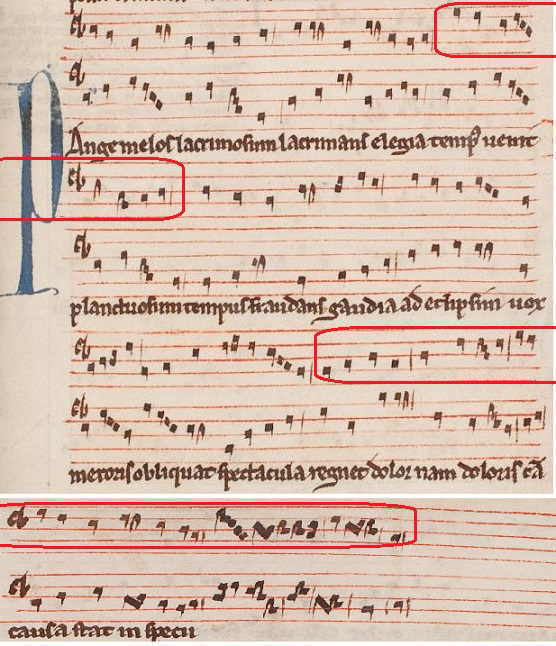 Figure 3.8 - W1 (119r(110r)-119v(110v)), Pange melos lacrimosum 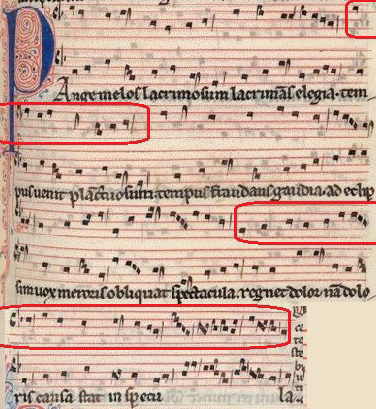 Figure 3.9 - F (351r-351v), Pange melos lacrimosum What is it that caused such variants between two sources that generally transmit conducti melodies consistently? Which is the closer version to the archetype of the song? The comparison between the two final melismas reveals that the notes do not only correspond in terms of absolute pitch, but in their figurative representation on the score as well (i.e., choice of ligatures or choice of plicae). This would lead to the conclusion that the variants may only be due to a lacking source copy for one of the two manuscripts; the scribe of one of the two sources had to “fill in” gaps of absent music found in the manuscript he was copying from. 伝統的なconductiのメロディーを一貫して伝える2つの資料の間にそのような変形を引き起こしたのは何であろうか?歌の原型に近い版はどちらか? 2つの最終的なメリスマを比較すると、音符は絶対的な音程だけでなく、楽譜上の姿形上の表現(すなわち、連結符の選択またはplicaの選択)にも対応することが分かる。これは、variantsが2つの写本のうちのどちらか1つに欠けている筆写による可能性があるという結論に至る。 2つの資料のうちの1つの書記は、彼が写譜していた写本にあった欠けている音楽の隙間を「埋める」必要があったのである。 Furthermore, a closer look to Figure 3.8 and Figure 3.9 reveals two scribal errors on the pages of W1. The first is a dittography, and occurs at the turn of the page, where the word causa is repeated twice, the first time abbreviated and followed by an unnecessary Silbenstrich, while the second resembles the configuration found in F. A further variant is the omission of the ending syllable of the conductus (la). While omissions are fairly common throughout the repertoire, we find very few cases of dittography, and the combination of the two errors is particularly rare event, which other sources, now lost, might however have explained. さらに、Figure 3.8 and Figure 3.9を詳しく見ていくと、W1写本のページに2つの書記エラーがあることがわかる。最初のものはdittography(重複誤写)であり、ページのめくり目で発生し、causaという言葉が2回繰り返され、1回目は省略され、続いて不要なSilbenstrichが続く。2つ目のものはF写本に見られるconfigurationに似ている。さらなるvariantは、conductus(la)の終わりのシラブルの欠落である(訳注;第1スタンザの終わり、speculaの”la"の部分)。dittographyは非常に珍しく、2種類のエラーの組み合わせはさらに珍しい。 The presence of identical passages excludes the possibility that the testimonies represent two distinct polyphonic versions of a former monodic melody. Yet, it must be stressed that the upper voice has many more variants than the lower voice, which is furthermore clearly constructed as a stand-alone melody.76 In view of this, one can infer that the version delivered in W1 represents the most recent extant reworking of the music setting for the poem Pange melos lacrimosum. 特定のパッセージの存在は、testimoniesが以前の単声メロディーの2つの別個の多声版を表す可能性を排除する。しかし、上声部には下声部よりも多くの変形があり、独立型のメロディとしてさらに明確に構成されていることが強調されなければならない。これを見ると、W1で伝えられる版は、詩Pange melos lacrimosumのための音楽設定のもっとも新しい再加工を示す。 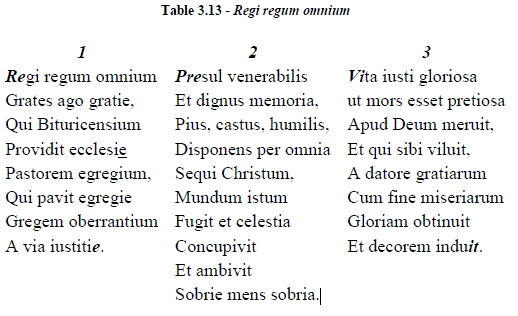 Contrary to Pange melos lacrimosum, the musical design of Regi regum omnium is more markedly melismatic. It has been suggested that the text concerns the death of St William, Archbishop of Bourges, which occurred on the 10th of January 1209.77 The piece is only preserved in F (337v-338v), and consists of three dissimilar stanzas. In this song, stanzas outnumber terminal caudae. Although this is unusual behaviour (unheard of before the end of the twelfth century), it is possible to find such cases among conducti composed in the thirteenth century, when the use of caudae becomes more flexible.78 The length of the melismas in Regi regum omnium increases proportionally towards the end of the piece; the first four caudae are of 15-to-20 perfections, while the melismas in the last stanza are about double this size (compare Figure 3.10 and Figure 3.11).77 Pange melos lacrimosumとは対照的に、Regi regum omniumの音楽デザインは、より顕著にメリスマ的である。 このテキストは、1209年1月10日に発生したSt William、Bourges大司教の死に関するものであることが示唆されている。この作品はF写本(337v-338v)でのみ保存され、3つの異なるStanzasで構成されている。 この曲では、スタンザはterminal caudaeを上回る。 これは普通の状況ではないが(12世紀終わりまでには珍しかった)、13世紀に作られたconductiでは、こうしたケースは見つけることは可能である。その頃にはcaudaeの使用はより柔軟になっていたからである。Regi regum omniumでは、メリスマの長さは、作品の終わりに向かって、それに比例して増加する。 最初の4つのcaudaeは15から20perfectionであり、一方、最後のスタンザのメリスマはこのサイズの約2倍である。(compare Figure 3.10 and Figure 3.11).  Figure 3.10 - F (337v). First Cauda on Regi. 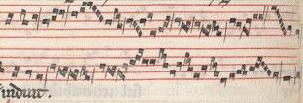 Figure 3.11 - F (338v). Last Cauda on induit. |